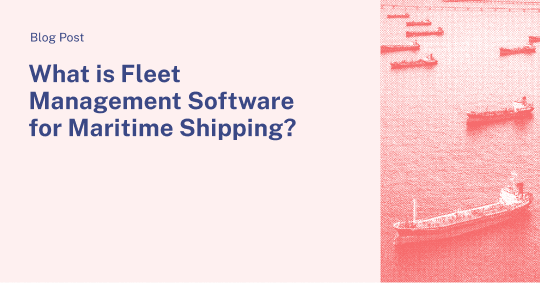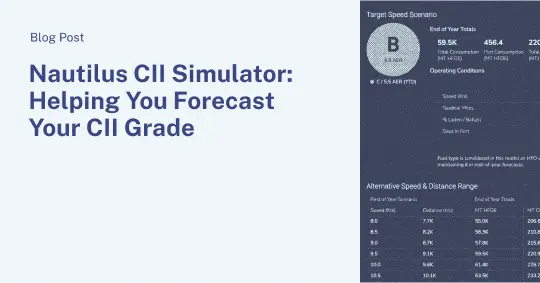Noon-based S&C curves can’t maximize profitability (and reporting quality has little to do with it)
One hundred years ago, calculating voyage profitability was a simpler equation. There were fewer companies at sea and simpler means of propulsion.
But today, it’s very different; the equation has become more complex.
Now operational excellence in shipping requires a complete understanding of how vessels have performed, are performing, and will perform—in every weather and draft condition. Accurate, up-to-date speed and consumption models are critical because they’re the key input of every decision that Operations, Technical, and Chartering teams make over the lifetime of a vessel, all of which directly tie to crucial commercial outcomes.
And since vessel performance is such a critical part of the equation, the performance data that serves as the basis for those calculations must be closely scrutinized and curated.
For years, noon reports have served as the single source of truth for all things vessel performance-related. But critics often point to their questionable reliability and the high variance in reporting standards, in an attempt to undermine their credibility. (In some cases, reporting issues may very well be present, and steps can be taken to address that by both crew and shoreside teams.)
What gets lost in that argument is a much larger issue around data frequency.
Even the most high quality and rigidly structured noons (completed by the most skilled crews) are insufficient for building high-fidelity speed and consumption curves. Noons simply don’t provide enough data to generate accurate S&C curves due to a lack of important context.
What’s missing in the resulting S&C calculations can drastically alter commercial and vessel management outcomes:
- Inaccurate performance monitoring and poorly executed maintenance planning
- Incomplete voyage monitoring
- Inaccurate TCE Predictions
- Ineffective claim mitigation or arbitration
- Poorly calculated engine configurations
- Fuel quality monitoring as it happened, not as it happens
Without real-time data, speed-power curves can’t be trusted as a reliable metric of propulsion efficiency, and shoreside teams will struggle to make decisions that maximize the yield of each vessel under management. Simply put, they’ll lose more money because of bad or unreliable information.
Nautilus Labs examined analyses by Hyundai Heavy Industries (HHI) and University College London, in addition to conducting our own study of current vessels on Nautilus Platform. In each instance, noon-based S&C models were found to be 15-20% less accurate in estimating fuel consumption than those based on high frequency data. In the HHI study, noon-reported weather was erroneously reported 68% of the time when compared to NOAA Hindcast Data in BF4:
“…the inaccuracy and uncertainty of NR data is too big to assess ship performance.”
We’ve created a platform that replaces the uncertainty and heavy-lifting from noon report-based S&C models—with a complete, real-time understanding of vessel performance. By taking high frequency sensor data and unifying it with weather provided by the world’s most trusted sources, Nautilus gives all teams involved in commercial decision-making (operations, chartering, technical, fleet managers et al.) tools that are purpose-built to address changes as they happen (and in an increasingly complex S&C world).
To learn more about how Nautilus Platform can optimize each voyage for maximum fuel efficiency and profitability, click here or contact me with any questions.


